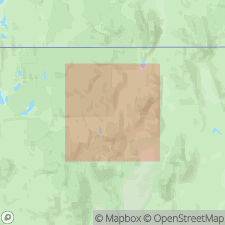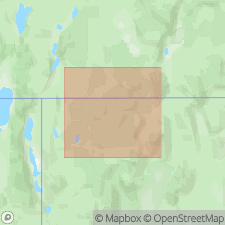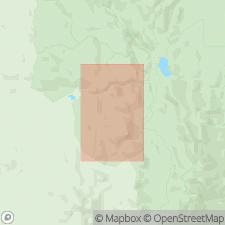
- Usage in publication:
-
- Summit Lake Tuff*
- Modifications:
-
- Named
- Geochronologic dating
- Dominant lithology:
-
- Tuff
- AAPG geologic province:
-
- Great Basin province
Summary:
Named for exposures near Summit Lake, Rock Spring Table 15' quad, Humboldt Co, NV. Type locality: SW/4 NW/4 sec 35, T43N, R26E, Idaho Canyon 15' quad, northwestern part of Black Rock Range, Humboldt Co, NV. Traced from west-central part of Pine Forest Range to southernmost part of Black Rock Range, and to 41 deg 08' in southern Calico Mountains. Extensive exposures near Massacre Lake, northernmost Washoe Co and farther south in Washoe Co. Original extent exceeds 3000 sq mi. Usually less than 100 ft thick. Source probably about 41 deg 25' in Humboldt Co. Forms cliff of densely welded dark-brown weathering tuff. Has horizontal jointing and lenticular gas cavities. Contains 20-25% phenocrysts (twinned anorthoclase). Overlies Idaho Canyon Tuff; underlies tuff of Indian Spring. K-Ar age of 15.1 +/-0.5 Ma.
Source: GNU records (USGS DDS-6; Menlo GNULEX).

- Usage in publication:
-
- Summit Lake Tuff*
- Modifications:
-
- Age modified
- AAPG geologic province:
-
- Great Basin province
Summary:
Mapped in small area near Idaho Canyon along SE border of Charles Sheldon Wilderness Study Area. Is light brownish gray to pale yellowish brown, is commonly mottled, and contains abundant phenocrysts. Groundmass is part vitric and part devitrified; shard and pumice textures prominent. Is part of middle sequence of rhyolite and welded tuffs with intercalated sediments. Age is middle Miocene based on K-Ar ages of 15.6 Ma (Evernden and others, 1964) to 15.1 +/-0.5 Ma (Noble and others, 1970) [and DNAG and Berggren and others (1985) time scales].
Source: GNU records (USGS DDS-6; Menlo GNULEX).

- Usage in publication:
-
- Summit Lake Tuff*
- Modifications:
-
- Areal extent
- AAPG geologic province:
-
- Great Basin province
Summary:
Small outcrops mapped in SE corner of High Rock Lake and NE corner of McConnel Canyon 7.5' quads in WC part of Calico Mtns, Washoe Co, NV. Is brown to reddish-brown, generally quartz-poor, densely welded ash-flow tuff. Typically displays fiamme and contains phenocrysts of anorthoclase and minor biotite, clinopyroxene, and amphibole. Underlies Soldier Meadow Tuff. Overlies aphanitic andesite lava flow equivalent in age to Steens Basalt (Noble and others, 1973, p.1396).
Source: GNU records (USGS DDS-6; Menlo GNULEX).
For more information, please contact Nancy Stamm, Geologic Names Committee Secretary.
Asterisk (*) indicates published by U.S. Geological Survey authors.
"No current usage" (†) implies that a name has been abandoned or has fallen into disuse. Former usage and, if known, replacement name given in parentheses ( ).
Slash (/) indicates name conflicts with nomenclatural guidelines (CSN, 1933; ACSN, 1961, 1970; NACSN, 1983, 2005, 2021). May be explained within brackets ([ ]).

